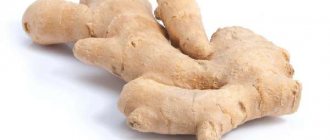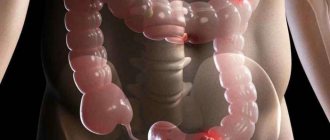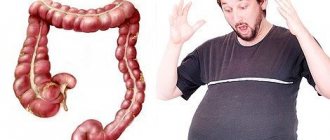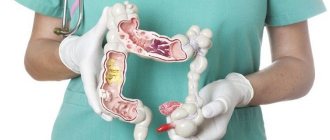Burning, squeezing and other unpleasant conditions localized in the chest are among the symptoms of many diseases, so when they appear, a person should first consult a doctor. Many organs from different body systems are localized in this area, and damage to each of them can be accompanied by a burning sensation.
To get rid of such unpleasant phenomena, you need to identify and eliminate the provoking factor. Given these circumstances, it is first necessary to conduct a thorough diagnosis.
Why does it burn and hurt in the chest?
One of the most important organs located in this area is the heart with all its vessels and membranes. This organ is responsible for transporting blood throughout the body. The heart is located behind the sternum and slightly shifted to the left.
This is why so-called heart pains are felt in the center of the sternum, and not on the left side, as many believe:
- An attack of angina, or angina pectoris. Burning, “tightness,” a feeling of squeezing behind the sternum or in the left half of the chest is a classic sign of an angina attack. Discomfort and pain with this disease usually occur after emotional or physical stress, tend to intensify and quickly disappear if you calm down or stop physical labor, or take nitroglycerin. As a rule, the duration of the attack does not exceed a quarter of an hour;
- Myocardial infarction. The presence of this condition can be said when an attack of angina does not subside for a long time and is not stopped by the above-mentioned nitroglycerin. The main conditions indicating the development of myocardial infarction are pressure and pain in the heart area. In this case, an urgent visit to the hospital is necessary; it is better to call an ambulance or take the patient yourself;
- Pulmonary embolism. The cause of the disease is thrombosis of the deep veins of the legs. A thrombus (blood clot) breaks off from the wall of a vein in the leg and migrates throughout the body. There is a high probability that it will provoke blockage of the branches of the pulmonary artery, causing ischemia of the lung tissue. In addition to pain that worsens with breathing, the symptoms of thromboembolism include shortness of breath, cough with bloody mucus, and intermittent breathing. Thromboembolism is a life-threatening condition that requires urgent medical intervention and can be fatal;
- Myocarditis. It can occur after a heart attack, such as a virus, allergy, or autoimmune disorder. If there is a burning sensation and pain in the chest, then it is quite possible to suspect the development of this pathology;
- Rheumatism. This disease can affect the heart and its membranes, so pain and other symptoms can also be regarded as the beginning of inflammatory rheumatic complications;
- Cardioneurosis. It occurs against the background of regular stress and psycho-emotional stress. Often, the disease is indicated by pain localized exactly in the left half of the sternum, but other unpleasant phenomena may occur. The pain syndrome in neurosis lasts quite a long time, is not associated with physical activity, is not relieved by nitroglycerin, but almost always disappears after taking sedatives.
Strategy to combat the problem
If you experience severe pain in the right hypochondrium and air belching, you should first consult a doctor (or call him at home). Before a medical examination, it is prohibited to take any antispasmodics such as No-shpa and Drotaverine, as they may complicate the diagnostic process. It is also prohibited to use warming objects such as heating pads. Treatment is carried out both with the help of drugs and traditional medicine, and even using non-drug methods.
Therapy without the use of drugs
Non-drug methods for eliminating problems with pain and belching include:
- sleeping with your head elevated (for example, on two or more pillows);
- Immediately after eating, take slow walks for 30 minutes;
- loosely wearing a belt or belt (without tightening);
- refusal of any physical activity on the abdominal muscles (prohibition of bending, lifting weights, twisting the body).
Use of medications
The same symptoms can be treated with special medications. Most often used:
- antacids such as Phosphalugel and Maalox, which help get rid of belching and burning in the stomach;
- Smecta and regular activated carbon, which also cope with heartburn and belching;
- Motilak or Espumisan, which eliminate excess gas accumulation and stagnation in the stomach;
- Festal, Pancreatin and Mezim, which help get rid of heaviness and improve digestion;
- Omez and Omepramezole, which bring stomach acidity back to normal;
- Bactisubatil and Bactrim, restoring microflora in the gastrointestinal tract.
ethnoscience
To treat the same symptoms, it is recommended to use folk remedies, among which the most famous is goat's milk. Half a liter of liquid is divided into 3 equal portions and drunk throughout the day. A week after using this technique, belching and pain disappear. The only contraindication is an allergy to the casein protein contained in such milk.
If belching and pain on the right side occur, it is also recommended to drink special herbal decoctions. With their help you can stop gas formation and improve digestion. One of the most common remedies is made from peppermint and yarrow leaves, as well as St. John's wort and dill seeds. They are taken in a ratio of 1:1:1.5:1 and poured with boiling water (if 10 g of components are taken as one part, 300 g of heated water is required). After this, keep it in a water bath for about half an hour and take the resulting solution after meals (2 tbsp. L).
Another popular recipe is based on flaxseed and is simple enough to take just a few minutes. Just take 1 tbsp. l seeds and brew with boiling water. The resulting product is infused for about half an hour and consumed 50 g shortly before meals. Two to three weeks of treatment usually lead to positive results. A mixture of equal proportions of potato and carrot juice, which is also taken before meals, also helps a lot.
It is best to treat symptoms not only with folk remedies or medications, but to use them in combination.
The doctor who made the diagnosis should help you choose traditional and traditional medicine.
Why does it burn in the chest area: other reasons
This phenomenon can be caused by other factors. The most common of these are:
- Intense physical activity;
- Painful cough;
- Fracture of the sternum or rib;
- Chest contusion;
- Heartburn;
- Peptic ulcer;
- Gallbladder diseases;
- Hiatal hernia;
- Inflammation of the esophagus, accompanied by the reflux of gastric juice into it;
- Scoliosis of the thoracic spine;
- Neuralgia of the intercostal nerves;
- Herpes zoster;
- Myositis is inflammation of the intercostal muscles.
Let's take a closer look at the listed reasons and their other signs. For example, with heartburn, a burning sensation most often occurs along the entire line of the esophagus, starting from the location of the stomach and ending at the throat. The burning sensation can be felt for several hours and is accompanied by sour belching.
To get rid of discomfort, you need to drink a glass of water with a spoonful of soda diluted in it. If heartburn attacks occur frequently, you need to visit a gastroenterologist and identify its cause.
Among other gastrointestinal lesions, burning is often caused by reflux esophagitis, an inflammatory disease of the esophagus. It is characterized by the fact that there is a reverse release of gastric juice, which corrodes the walls and mucous membrane of the esophagus. The burning sensation is localized in the lower part of the chest and is constant.
Survey
Diagnosis is carried out by a gastroenterologist. When choosing methods, it is assumed that heartburn in the chest is more typical of damage to the upper digestive tract. The examination includes modern laboratory and instrumental studies to assess the functional and morphological state of the gastrointestinal tract. The most valuable in diagnostic terms are:
- Endoscopy
. Endoscopic visualization of the esophageal and gastric mucosa is an informative method for confirming gastroesophageal reflux, the most common cause of heartburn. During endoscopy, it is possible to establish signs of inflammation and detect areas of pathologically altered tissue. If necessary, a biopsy of mucosal areas is taken. - Radiography
. A series of x-rays after oral contrast with barium sulfate is used to detect cicatricial deformities, strictures, and large tumors in the esophagus and stomach. Using radiography, the speed of contrast movement through the gastrointestinal tract is monitored, which makes it possible to assess the contractile function of smooth muscles. - Ultrasound scanning
. Abdominal ultrasound is prescribed to all patients with a burning sensation in the chest as a quick and non-invasive screening method that helps identify nonspecific signs of inflammatory processes or morphological changes in organs. According to indications, targeted sonography of individual organs is performed - liver, pancreas. - pH-metry
. Measurement of total acidity and free hydrochloric acid is used to detect hypersecretion of gastric parietal cells leading to heartburn. Intraesophageal pH-metry has a high diagnostic value; normally, the acidity level should be above 4 units. Additionally, a blood test is taken to determine the level of pepsinogen and gastrin. - Stool analysis
. Diseases of the pancreas and biliary system, which are often accompanied by a burning sensation in the chest, are always manifested by changes in the coprogram. A standard macroscopic and microscopic examination of stool is recommended, and, if necessary, a reaction to occult blood. According to indications, the level of pancreatic elastase is determined.
It is mandatory to conduct manometry to study the contractility of the lower esophageal sphincter. The examination plan for the presence of substernal heartburn includes standard laboratory methods. An advanced biochemical blood test with liver tests is necessary to assess the activity of digestive processes and the functional state of the hepatobiliary system. After excluding organic causes of heartburn from the gastrointestinal tract, a neurological examination is necessary.
Pressure, pain and burning in the chest due to diseases of the respiratory system
Symptoms such as these may indicate problems with the respiratory system:
- Bilateral pneumonia;
- Flu;
- Angina;
- Cough with bronchitis.
Inflammatory diseases, accompanied by fever and cough, are the main cause of discomfort in the chest area. Unpleasant sensations can be permanent or appear only when coughing, localized in the middle or shifted to the side (right or left). With bilateral pneumonia and pleurisy of the lungs, the symptom can spread to the entire sternum area.
In addition, sore throat, flu and other inflammations also include discomfort in this area in their symptoms. There is also a high temperature, pain when swallowing, cough, etc.
How to get rid
If anxiety arises, the patient should go to the doctor and find out about the causes of the discomfort. Before visiting a specialist, you can do the following:
- Adjust your diet (abstain from fatty, fried, salty foods, alcoholic and carbonated drinks, coffee and sweets).
- If discomfort is associated with eating food, then take safe acid-lowering drugs (Almagel, Gaviscon, Rennie, Omez).
- Take a horizontal position and rest if anxiety arises after physical activity.
- If you experience difficulty breathing or a rise in temperature, call an ambulance.
Chest discomfort in mental disorders
The cause of pain can be strong emotional distress, emotional turmoil, and stress. Many people complain of such sensations, although everything is fine with their body physically. In this case, the discomfort is permanent and does not disappear if you take any medications or change your body position.
This condition can lead to decreased appetite, apathy, decreased concentration, and irritability. In this case, the help of a psychologist is necessary.











